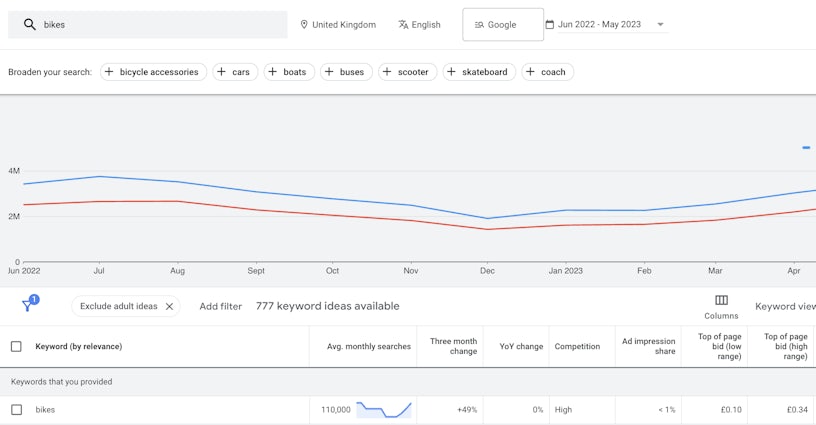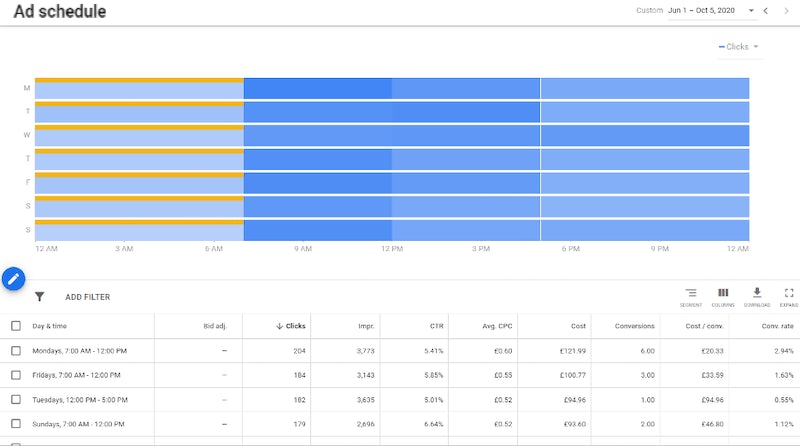International PPC campaigns are ideal for increasing your reach overseas. Whether you want to enter new international markets or grow your existing presence in particular regions, PPC is a highly effective marketing channel.
However, running multilingual PPC ads in different territories presents its fair share of challenges and difficulties, no matter what size your organisation is or how well you know the market. In this article, we’ll guide you through the different elements you should consider before launching campaigns in international markets, walking you through the process of planning, structuring, and managing your international PPC campaigns.
Use the links below to navigate to specific sections.
NOTE: This post has been updated for 2024 👍
- Planning for international PPC campaigns
- Choosing target markets for your international PPC ads
- Research the right channels
- Multilingual PPC: translate (and localise) your ad copy
- Appeal to local culture with messaging and creative
- Prepare your landing pages
- Set up time zones and custom schedules
- Consider seasonality in your target markets
- International PPC campaign structures
- Language-specific campaigns
- Country-specific campaigns
- Region-specific campaigns
- Managing international PPC campaigns
- Generate brand awareness with display and social ads
- Gather data, then adapt
- Assess lead quality from your international ads
- Glean insights from your international customers
- Next steps
Planning for international PPC campaigns
Expanding marketing efforts internationally can be an exciting step. However, with it entails a lot of planning and preparation.
It’s important not to rush when setting up your international PPC campaigns until you’ve thought about aspects like channel allocation, localization and time differences, all of which can have a massive impact on your overall international PPC performance.
Choosing target markets for your international PPC ads
Before creating your international PPC ads, it’s important to assess the market opportunity. Even if you think you know everything about it, throw all bias out of the window and research the country as you would a new market.
Think about the suitability of the product or service. Is what you’re selling right for the market? Many product/service offerings have simply failed because the product/service is not right for the market.
Pay attention to the local legislation and taxes. This tends to vary from country to country, however, this can be sizable if not careful. In November 2020, many advertisers like Google introduced a new digital tax which meant that, depending on the country your PPC ads are running in, Google would add an extra charge on top of the budget you’re putting into your advertising account, passing the cost onto advertisers. As it stands, the digital tax currently impacts businesses trading in the UK (2%), Austria (5%) and Turkey (5%), meaning that advertising costs could be between 2-5% higher depending on the market you’re launching into. Therefore, it’s important to take this into consideration as you trade in new markets.
Furthermore, local CPCs/CPMs also tend to vary widely by country. To gain a rough idea, add your keywords to Google Keyword Planner and set the region to a specific country you’re planning to target. Software tools like SEMRush and Ahrefs can also help too in giving an indication of what traffic may look like in another country. However, do use these with caution, as these estimates can sometimes be off – it’s only when the campaign actually starts running that you’re able to gain a true idea of CPC/CPM levels.

Research the right channels
When it comes to channels, look to see what people use most to search in the regions you’re looking to target. It’s often assumed that Google is the leading search engine around the world; however, this is not always the case. Although Google holds a strong presence, retaining most of the global search market at 83%– this has fallen considerably in the past 3 years. Whilst Bing’s market share has risen 5% from 6.43% to 9.19%. To find out more read our blog, Bing vs Google: Search Engine Comparison.
In countries like Russia and China, users prefer to use natively developed search engines. For example, Baidu holds 66% of the market share in China, whilst Yandex covers around 69% of the market share in Russia. This may be for a number of reasons, but one major reason is that Yandex and Baidu are developed to support specific alphabets different from the ISO Basic Latin Alphabet, which is the foundation for how search engines such as Google and Bing contextualise relevant search results. Instead, these search engines support the Russian Cyrillic Alphabet and the Han writing system in a sophisticated manner which Google lacks. Understanding the types of search engines users in different countries use is really a must if you want to make any kind of impact in the country you’re targeting. As targeting Google alone will exclude a significant number of users in these countries.
Statcounter can be a good site to start research, along with talking to contacts operating in that market. Representatives from specific ad platforms may also be able to help in providing regional usage data as well.
Multilingual PPC: translate (and localise) your ad copy
Don’t get lost in translation. There’s no quicker way to lose a user’s trust, offend a potential customer or look plain silly than getting your translations wrong.
Tools such as Google Translate are a great, simple way of translating basic words and phrases online. However, they’re not always reliable. Ensure to use a professional translator who is an expert in the language you’re working in and a native speaker in the target market. More often than not, we naturally use idioms when we speak, which when compared to another language can be lost in translation. Users can recognise this difference, especially those who know the market and speak like locals, using the right terminology and colloquialisms on a regular basis. Whilst this may seem like a small detail to us, it can help to build additional trust and credibility for the site and ads.
Even in English-speaking countries, consider spelling differences and tone of voice. For example, people in the US spell the term colour, as “color” whilst people in the UK spell it as “colour”. Sounds simple, but if keywords are not adapted valuable search traffic will be lost.
Appeal to local culture with messaging and creative
When advertising globally, it’s important to appeal to local culture with messaging and creatives. Look at any of the world’s leading brands for example, and you will see that these companies run completely different ad campaigns, depending on the culture of that country. However if your budget doesn’t stretch that far, consider what associations and messages you should use in your ads that will resonate well with your audience and not cause offence. If in doubt, ask advice from a native marketing consultant who can help avoid any ad faux pas.
However, to begin with, aim to research the culture and understand their unique interests. This could be as simple as researching what colours and images appeal to them. The tone of ads is also an essential component to consider, as certain cultures relate to language differently than others. For example, take weight-loss products, these may resonate well in the US however in other cultures something like weight may offend. Therefore, it’s important to understand these differences in order to tailor your messaging to appeal.
Another crucial factor to consider is to understand how your customers go about their daily lives and how this can affect your traffic and sales: In Dubai, a typical working week is usually Sunday to Thursday, whilst in the US and UK this is mostly Monday to Friday. Meanwhile, office staff in Japan usually work late into the hours of the night to early morning whilst those in the US and UK mainly work from 9am-5pm. This means that not many people would convert during this time, making it beneficial to advertise products for example to those in the US and UK later on in the day where people would be available to browse the internet.
Prepare your landing pages
Before launching any international PPC campaigns, it’s important to prepare your landing pages in order to maximise your chances of users converting.
Make sure to have the appropriate landing pages that are translated well where necessary and include pricing in the local currency. Another point to note is that some countries may not support large credit-backed transactions and have other styles of paying. In Brazil, for instance, it is common to use multiple credit cards to pay smaller balances, referred to as x2 or x3. Knowing this can help prep your landing pages so that you’re giving your target audience payment terms they are comfortable with. Furthermore, adding extra information such as local store details and their local shipping options can help instil trust within your international customers.
Another element to consider is the use of local domain extensions. Though opting for an international website with a single domain may be the simplest way to establish a unified brand for international customers, using local domain extensions to the country you’re advertising in can help build trust fast – particularly when you only have a few seconds before a user bounces. Having a local domain extension may not seem an essential factor, but creating a .com/au or .com/de subfolder for your site can help to improve the chances of someone clicking on your link, making a massive difference in the long run.
For more details on the importance of integrating international PPC together with a website that is set up for international SEO check out our Guide to International SEO URL Structure.
Set up time zones and custom schedules
Once you’ve built out your ad campaigns, don’t forget to set up time zones and custom schedules in the different countries you’re targeting.
Ad scheduling allows advertisers to run their ads on specific days and times to help better reach their demographic at the most opportune times without wasting additional ad spend, thus increasing your return on ad spend (ROAS). It can also help improve the cost-effectiveness of your campaigns, giving you more out of your daily budget by showing your ads only on the days and times that will perform the best, resulting in better campaign performance.
To go about this, you first create a new ad campaign. This will automatically run 24 hours, 7 days a week, 365 days a year unless specified otherwise. Therefore, it’s essential to create a custom schedule that shows your ads during the most opportune times of the day in the new country you’re advertising in.
To check which time zone your account falls under, go to the “Ad Schedule” tab, where this will be displayed at the bottom of the page. Usually, this will be the time zone in which the ad account was originally created, however, it’s good practice to double-check in case you’re advertising for a country outside of the one you’re occupying in.
From this, you’ll then be able to work out the hours in which you need to create a custom schedule. For example, if your account is under Eastern time but you want to advertise in South Africa (6 hours ahead) and run ads between the hours of 9am-5pm South African time, you need to create a custom schedule that starts your ads 3am-11am Eastern time. Being able to calculate this from the start, will ensure you get the most out of your campaign budget.

Consider seasonality in your target markets
Seasonality is also another crucial factor to consider when targeting different markets. For example, eventualities such as climate, public holidays and festivals/celebrations can all play a vital role in affecting the performance of your PPC campaigns. Therefore it’s important to note that as an advertiser, these seasons may vary considerably depending on the market you’re targeting.
For example, if you’re promoting ads for a fashion retailer that is very product focussed, your peak seasons for winter and summer will be very different to that of the UK compared to that of Australia. Furthermore, you would also need to be aware of the weather at different times of the year, as well as any public holidays or promotional days that may happen too, like Black Friday and Cyber Monday, both of which are hugely popular in America and China.
To be prepared, aim to create a shared calendar for your team to help track any key dates that may be important. This will enable you to plan sales and promotional activity accordingly, helping you to maximise your sales at peak times. If holidays don’t equal sales in your industry (i.e B2B), aim to use this as a way to plan the movements of budget and set client expectations when conversions may be lower.
International PPC campaign structures
In terms of organising international paid search campaigns, there is no ‘one’ right way in structuring accounts. Instead, there are several different approaches depending on your account’s KPIs, USPs and its audience it targets in each region.
Here are three main types of campaigns you can consider when structuring international PPC campaigns along with the benefits and challenges of each:
- Language-specific campaigns
- Country-specific campaigns
- Region-specific campaigns
Language-specific campaigns
Language-specific campaigns usually involve organising campaigns by language.
Example includes;
- English > Brand
- English > Generic
- German > Brand
- English > Generic
This campaign structure is ideal for those who are either in or are looking to expand into numerous countries. Language-specific campaigns tend to have shorter set-up times, compared to the other two international campaign structures, allowing for easier and quicker campaign management. Another great benefit is that this structure allows the inclusion of more countries within each campaign, providing more data to guide automated bidding strategies.
However, an aspect to be mindful of is that, when reporting, depending on the data required there may not be enough insights available into the performance of specific countries. For example, because campaigns can be created using the same language across countries, it may not be an appropriate choice to use for accounts where the messaging/keywords differ between countries or where the budgets are significantly different by country.
Country-specific campaigns
Meanwhile, country-specific campaigns split search campaigns by country.
Examples include;
- Italy > Brand
- Italy > Generic
- French > Brand
- French > Generic
This campaign structure is usually useful when accounts have country-specific budgets, different USPs (such as free delivery/guarantees) or different products as it allows you to tailor campaigns that best reflect your offering in each country. Furthermore, this campaign structure is good to use when you know your target audience is different in each country, enabling you to adjust the audience targeting to the demographic within that country.
However, this method can sometimes be difficult and time-consuming to set up and manage, particularly if there are a large number of countries within an account, given that at the very least there’ll be two campaigns (Brand and Generic) for each country. This means that the number of campaigns to set up and maintain can easily escalate especially when looking after multiple countries. Equally, this can also become more time-consuming when a country has its own budget and/or language. This method can also be limiting as a long-term strategy, defeating the objective of expanding into multiple countries as a result of the amount of time it takes to create, manage and maintain these campaigns.
Region-specific campaigns
Whilst, region-specific campaigns usually involve splitting campaigns by regions e.g. APAC, EMEA, NAM
Examples include;
- APAC > Chinese > Brand
- APAC > Japanese > Brand
- EMEA > English > Brand
- EMEA > French > Brand
- EMEA > German > Brand
- NAM > English > Brand
This campaign structure can be a useful way to organise campaigns if the budget is set by region, there’s region-specific messaging or if there are region-specific keywords or audiences.
Although, like country-specific campaigns, region-specific campaigns also have similar challenges. There might be fewer regions but within each region there are multiple languages which need to be broken down into, of which the time needed to set up and manage can become even more time consuming, along with the duplication of work.
Managing international PPC campaigns
International PPC campaigns aren’t something that you should set up and forget.
It’s important to keep tabs on your campaigns and continually monitor them, to ensure you’re bringing enough value to the amount you’re spending them to run. From gathering data to adapt your PPC performance to assessing the lead quality of international ads- here are a few ways you can manage your international PPC campaigns.
Generate brand awareness with display and social ads
Though PPC campaigns can mostly be used to increase sales and generate leads, they can also help in promoting brand awareness for your company.
For example, it can help create a strong identity for your brand, helping you set yourself apart from your competitors, and attract the right audience. This can be particularly useful when targeting international markets, as it can help instil trust among users, making them connect to your brand and become repeat purchasers of your product or service.
Display and social ads are a great way to achieve this as they can quickly help get your message across, and lead to better brand awareness, particularly in a saturated market. Unlike search ads, display ads are a type of online advertisement that appear on third-party websites like Google Partner sites and combine elements of text, image and video. Display ads also tend to have a much lower cost per click than search, so it can be a great way to reach a large number of people by impressions and generate a reasonable amount of clicks with a smaller amount of budget. Whilst social ads are those seen on social media sites such as Facebook, Instagram and Twitter. Both these can collectively help stimulate brand awareness, improving traffic to your site and thus ultimately your international PPC campaigns.

Gather data, then adapt
Once your PPC campaigns are up and running, it’s important to gather as much data as possible in order to better optimise and improve your performance.
A way you can do this can be by undertaking regular keyword reviews to ensure you’re targeting the right key terms. If your keywords are on broad match, aim to restrict your match type e.g. exact match so they’re more targeted. This will help you gain better control of your searches, and optimise spend for your ads.
Removing low-performing terms can also be important as this can help you understand what words/phrases are working and which are not, helping you to refine your terms further. Also, if certain keywords aren’t gaining enough traction, you may want to stop targeting these terms and add these as negatives so that your ads don’t display, preventing irrelevant traffic and additional ad spending.
With enough data, it could also be useful to test different headlines, copy and CTAs to find out which combination is best in incentivising people to click on your ad and make a purchase.
Budget permitting, and if your campaign is doing well, aim to increase your CPC bids to help improve the visibility of your ad and drive more traffic to your site. However, do be mindful particularly if you have two countries on opposite sides of the globe in the same campaign that raising or lowering bids during certain times will do the same for the country on the other side of the planet too. If you aren’t careful, countries with low CPCs and high volume could use up all of your ad spend whilst countries that have a higher CPC and higher conversion rate could be left behind.
Assess lead quality from your international ads
It’s important to assess the lead quality data from your international ads when targeting new international markets as this can indicate how likely users are to purchase your products or services.
Knowing this, can help your business grow and improve its operations as high-quality leads have a higher propensity to convert into paying customers. This means that, the higher quality of leads, the more revenue you’ll be able to generate from sales.
Take a look at conversions and see what people tend to click on. This way, you’ll be able to see what works and what isn’t, helping to better inform your strategy. Even if your ads are not generating enough clicks or conversions, it’s good to understand what it is, that is not actually resulting in purchases or sales-qualified leads as poor quality leads can result to a loss in revenue and time.
Glean insights from your international customers
Lastly, as you begin to generate more leads and sales, aim to gather insights from your international customers about your ads to help better improve your international PPC performance.
This can be a great way for an advertiser to build relationships with international customers and find out what they actually think about your campaign. Take the opportunity here to talk to your customer directly, either through conducting surveys or by having a face-to-face conversation with them. Identify what they look for when viewing ads and optimise yours accordingly.
The information you gather can be particularly useful, especially in helping you get ahead of your fellow competitors as you’ll be able to use these insights to better tailor your ads in line with the likes of your customer, helping you gain a competitive advantage.
Next steps
When it comes to international PPC campaigns, there’s no one-size-fits-all solution. It’s important to recognise that building international campaigns takes time – and that you can’t cut any corners or take any shortcuts.
It’s essential that you do your research, especially in the location you’re targeting, regardless of how well you know the area. Remember there are different ways of structuring your international campaigns depending on your account’s KPIs and the audience its targets, as well as a multitude of channels that your audience may use to search. Be sure to also pay attention to little details like ad copy and whether it’s localised to the region you’re targeting as well as the time zone you’re operating in. Taken together, all of this can have a huge impact on your overall international PPC performance.
Keen to discover how an international PPC agency like Impression can help you improve campaign performance overseas? Get in touch today!



